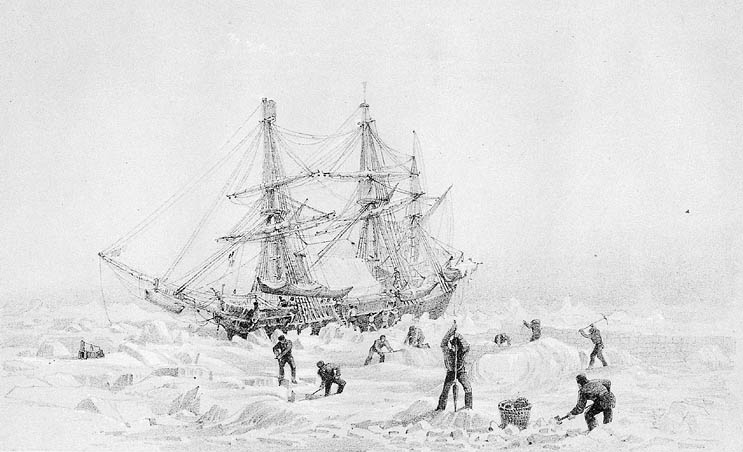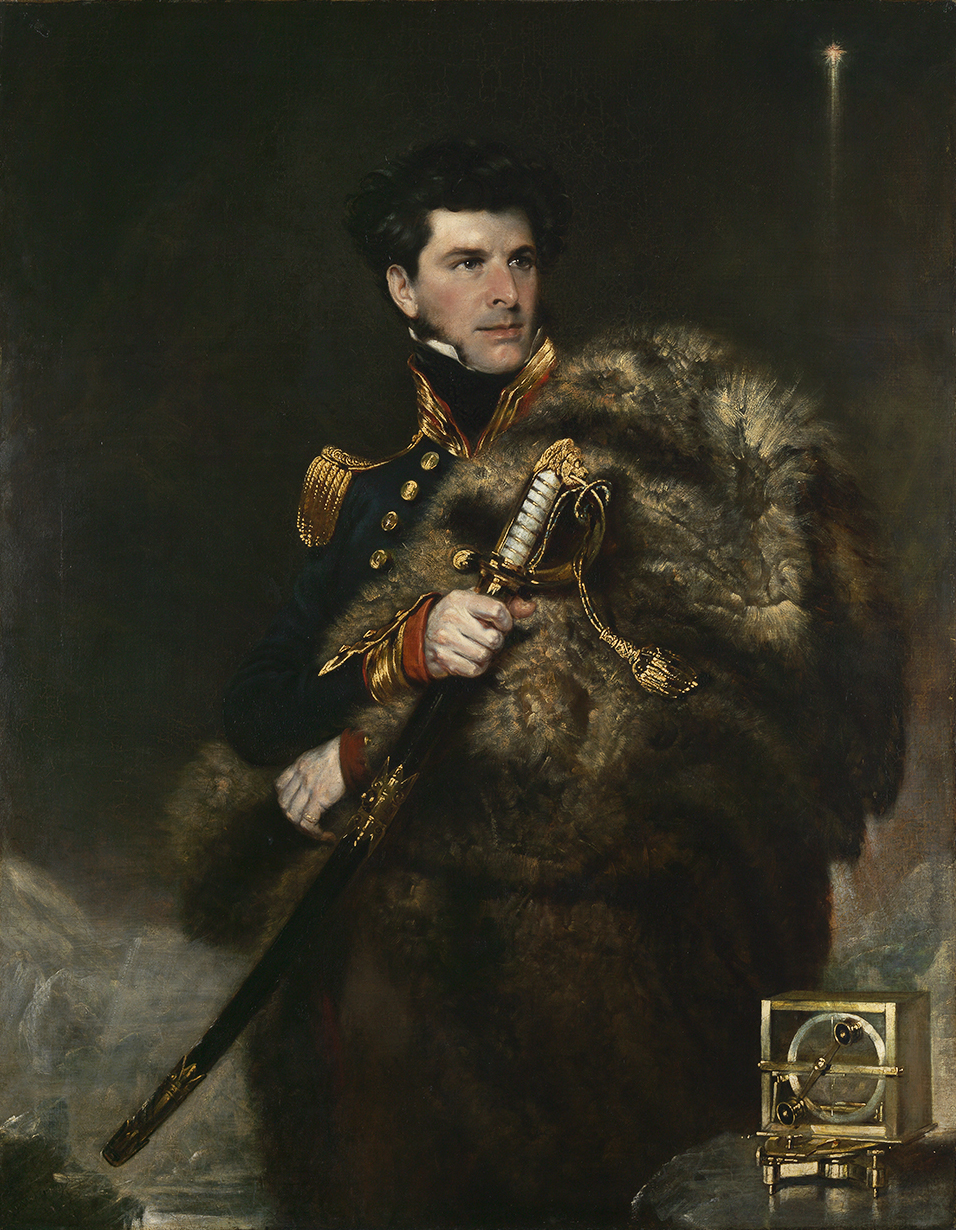HMS Terror
The HMS Terror was a specialised warship and a newly developed bomb vessel constructed for the Royal Navy in 1813. She participated in several battles of the War of 1812, including the Battle of Baltimore with the bombardment of Fort McHenry.
She was converted into a polar exploration ship two decades later, and participated in George Back's Arctic expedition of 1836–1837, the successful Ross expedition to the Antarctic of 1839 to 1843. The ship was lost with all hands during Sir John Franklin's ill-fated attempt to force the Northwest Passage in 1845.
Military service
HMS Terror was a Vesuvius-class bomb ship built over two years at the Davy shipyard in Topsham in south Devon, for the Royal Navy. Her deck was 31 m (102 ft) long, and the ship measured 325 tons burthen. The vessel was armed with two heavy mortars and ten cannon, and was launched in June 1813.
Terror first saw service in the War of 1812 against the United States, during which the ships of the North America and West Indies Station of the Royal Navy blockaded the Atlantic ports of the United States and launched amphibious raids from its base in Bermuda.
Under the command of John Sheridan, she took part in the bombardment of Stonington, Connecticut, on 9–12 August 1814. She also fought in the Battle of Baltimore in September 1814 and participated in the bombardment of Fort McHenry. This attack inspired Francis Scott Key to write the poem that eventually became known as "The Star-Spangled Banner".
Ross Expedition
In the mid-1830s, Terror was refitted as a polar exploration vessel. Her design as a bomb ship meant she had an unusually strong framework to resist the recoil of her heavy mortars; thus, she could withstand the pressure of polar sea ice, as well.
In 1839 Terror was assigned to a voyage to the Antarctic along with the HMS Erebus under the overall command of James Clark Ross. Francis Crozier was captain of Terror on this expedition, as well as second-in-command to Ross.
The expedition spanned three seasons from 1840 to 1843 during which Terror and Erebus made three forays into Antarctic waters, traversing the Ross Sea twice, and sailing through the Weddell Sea southeast of the Falkland Islands. The dormant volcano Mount Terror on Ross Island was named after the ship by the expedition commander.
Franklin Expedition
Before leaving on the Franklin expedition, both ships in the group, HMS Erebus and HMS Terror, underwent heavy modifications for the journey. They were outfitted with steam engines, taken from former London and Greenwich Railway steam locomotives. Rated at 25 hp (19 kW), each could propel its ship at 4 knots (7.4 km/h). The pair of ships became the first Royal Navy ships to have steam-powered engines and screw propellers. Iron plating was added fore and aft on the ships' hulls to make them more resistant to pack ice, and their decks were cross-planked to distribute impact forces.
Their voyage to the Arctic was with Sir John Franklin in overall command of the expedition in Erebus, and Terror again under the command of Captain Francis Crozier. The expedition was ordered to gather magnetic data in the Canadian Arctic and complete a crossing of the Northwest Passage, which had already been charted from both the east and west, but never entirely navigated. It was planned to last three years.
Disappearance
The expedition sailed from Greenhithe, Kent, on 19 May 1845, and the ships were last seen entering Baffin Bay in August 1845.
The disappearance of the Franklin expedition set off a massive search effort in the Arctic and the broad circumstances of the expedition's fate were revealed during a series of expeditions between 1848 and 1866. Both ships had become icebound and were abandoned by their crews, all of whom died of exposure and starvation while trying to trek overland to Fort Resolution, a Hudson's Bay Company outpost 970 km (600 mi) to the southwest.
Subsequent expeditions up until the late 1980s, including autopsies of crew members, revealed that their canned rations may have been tainted by both lead and botulism. Oral reports by local Inuit that some of the crew members resorted to cannibalism were at least somewhat supported by forensic evidence of cut marks on the skeletal remains of crew members found on King William Island during the late 20th century.

